Co-incineration of sewage sludge in coal-fuelled power stations
May 17, 22
The co-incineration of mechanically de-watered sewage sludge in existing coal-fuelled power stations with highly effective flue gas pollution control is an economic and sensible alternative to the above mentioned, environmentally harmful disposal methods.
Furthermore, the municipal authorities are interested in long-term, safe and cost-effective disposal of sewage sludge from their sewage treatment plants. Sensible alternatives are being sought to the present method of disposing of mechanically dewatered sewage sludge such as dumping, agricultural use, drying and incineration.
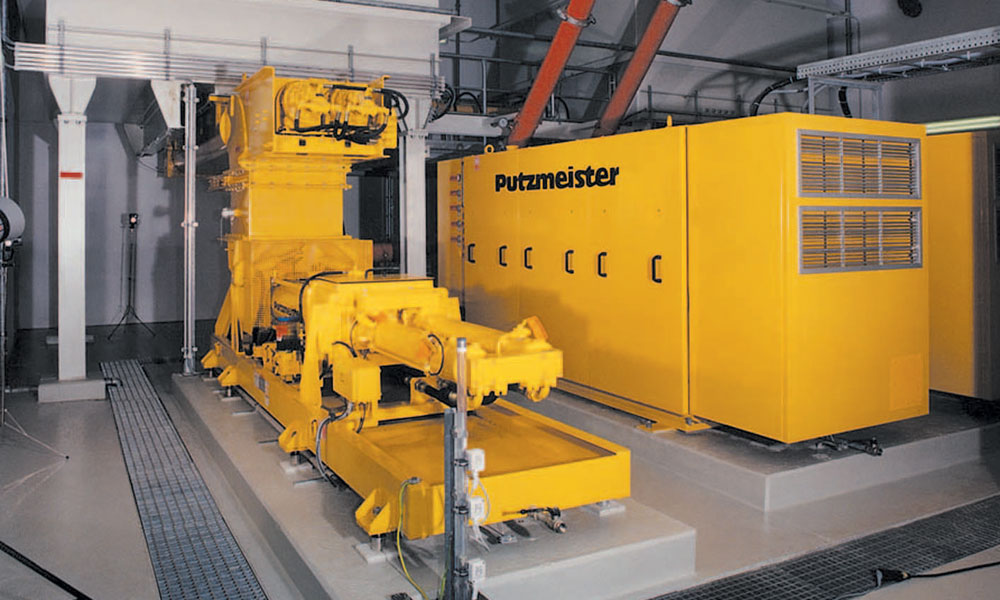
KOS 2180 piston pump
There are a variety of reasons for this:
- When used for agricultural purposes, the heavy metals contained in municipal sewage sludge are an increasing source of problems.
- It is getting increasingly difficult to dump sewage sludge in Germany.
- As a rule, the only way to deal with industrial sewage is by dumping or through heat processing.
- The costs of investment and operation for single substance incineration are very high.
- Drying sewage sludge is cost-intensive and consumes additional energy.
Basic idea and engineering
The process is installed in conventionally fuelled power stations where mechanically de-watered sewage sludge is incinerated in existing furnaces. In the co-incineration process, the sewage sludge is fed into existing boiler plants together with the primary energy carriers, brown coal or hard coal. Depending on the boiler capacity and on the type of coal used, approximately 1 % to 5 % of the dry coal flow is added as dried sewage sludge. For this purpose, both coal and the metered quantity of sewage sludge are introduced in the coal pulverizing unit, then mixed together and dried. This pulverized mixture of coal and sewage sludge is discharged from the mill pneumatically and fed into the boiler.
The actual percentage of sewage sludge solid matter to the amount of coal used is influenced, among other factors, by boiler capacity and the degree of moisture of the coal and:
- by the type of furnace (dry dust firing/ melt chamber firing) and
- by the type of coal pulverising unit (impact pulverizer/ball triturator/ cylinder crusher)
The sludge addition process is controlled from the control room and the responsibility for the amount of co-incinerating sewage sludge remains with the power station.
A complete system concept from just one company
Putzmeister can provide the complete plant technology required for
- Sewage sludge receiving
- Sewage sludge storage
- Sewage sludge transport and distribution
- Sewage sludge delivery to the coal distributor or into the chute to the pulverizing units
As Putzmeister bears the responsibility for the overall delivery, the customer, need not be concerned with any interface problems.
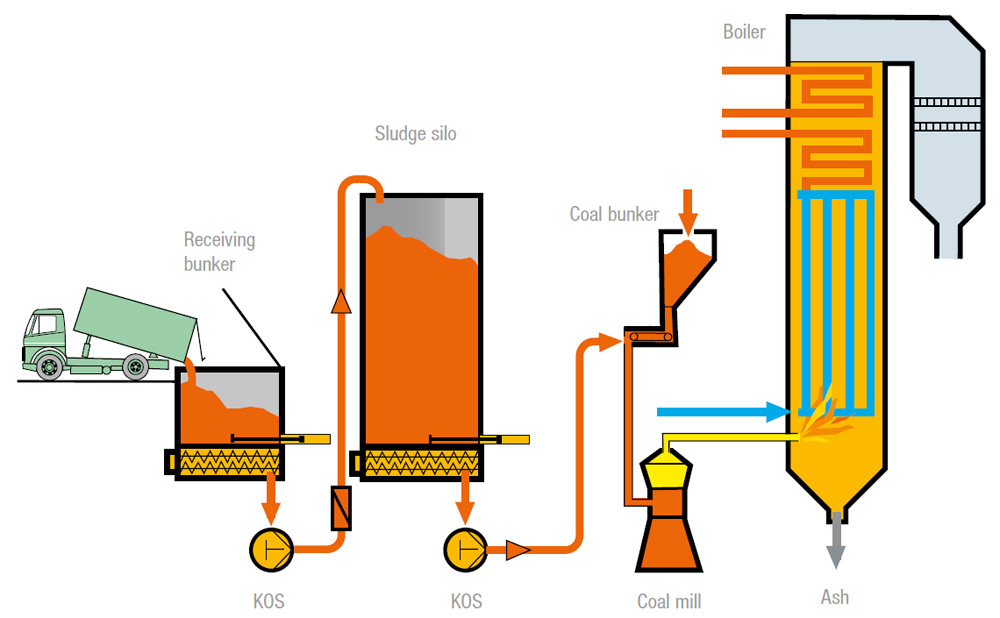
Plant description
In general, a sewage sludge co-incineration plant consists of the following major parts:
1. Sewage sludge receiving
- Sewage sludge is tipped from trucks into receiving bins with a hinged covered opening. The silo is situated in a pit at approximately 4 – 6 m depth, depending on the silo volume.
- As an alternative, the silo can be at ground level and filled by means of a front end loader.
- In the receiving silo a hydraulically driven Putzmeister discharge system feeds the KOS solids handling pump via sliding frame and discharge auger. The discharge system and the pump are ideally matched with no interfaces.
- The valveless solids handling pump with S-transfer tube (KOS) allows maximum free passage of oversize material in the sewage sludge.
- A foreign body separator with a screen is installed into the delivery line downstream from the silo pump eliminating oversize material in the sewage sludge when it is pumped to the storage silo.
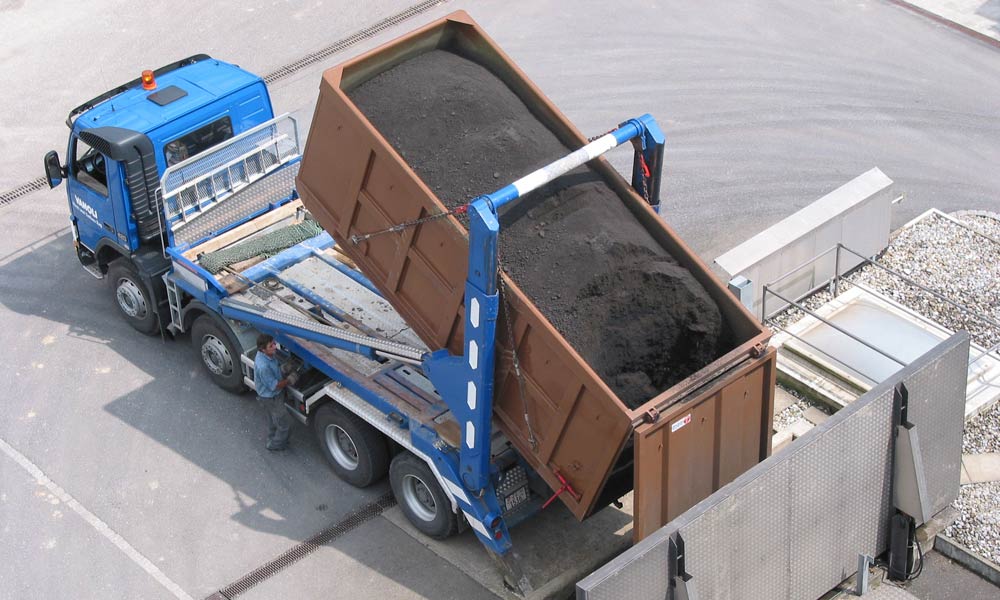
Truck receiving silo
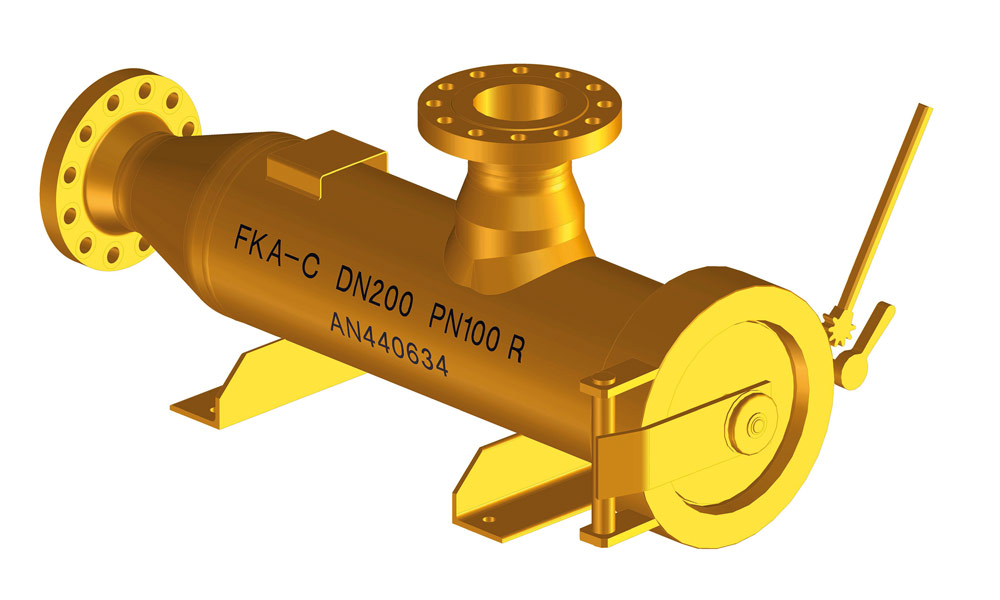
Foreign body separator
2. Storage of sewage sludge
- The storage silo serves to ensure that the receiving silo is emptied as quickly as possible when the solids handling pump is at increased output. This avoids additional waiting times for trucks on arrival. The storage silo also buffers the process between receipt and incineration. A sewage sludge storage unit keeps sludge incineration going between truckloads of received sludge.
- The storage silo uses the same reliable sliding frame and discharge auger as the receiving silo.
- Additionally, depending on the selected delivery via “phase valves” or feeding augers, the following equipment can be supplied:
- Electrical variation of output
- Output capacity of sludge pump with electronic control via PLC
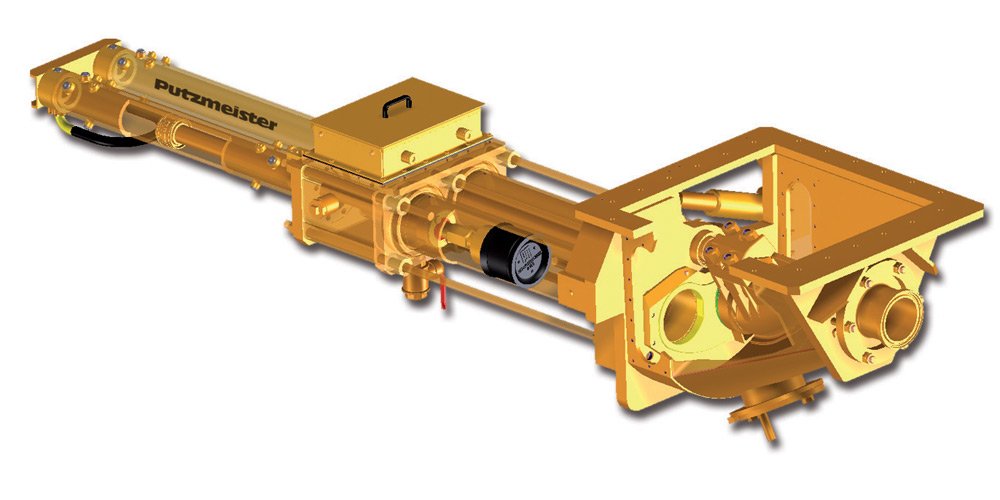
KOS solids handling pump with S-transfer tube
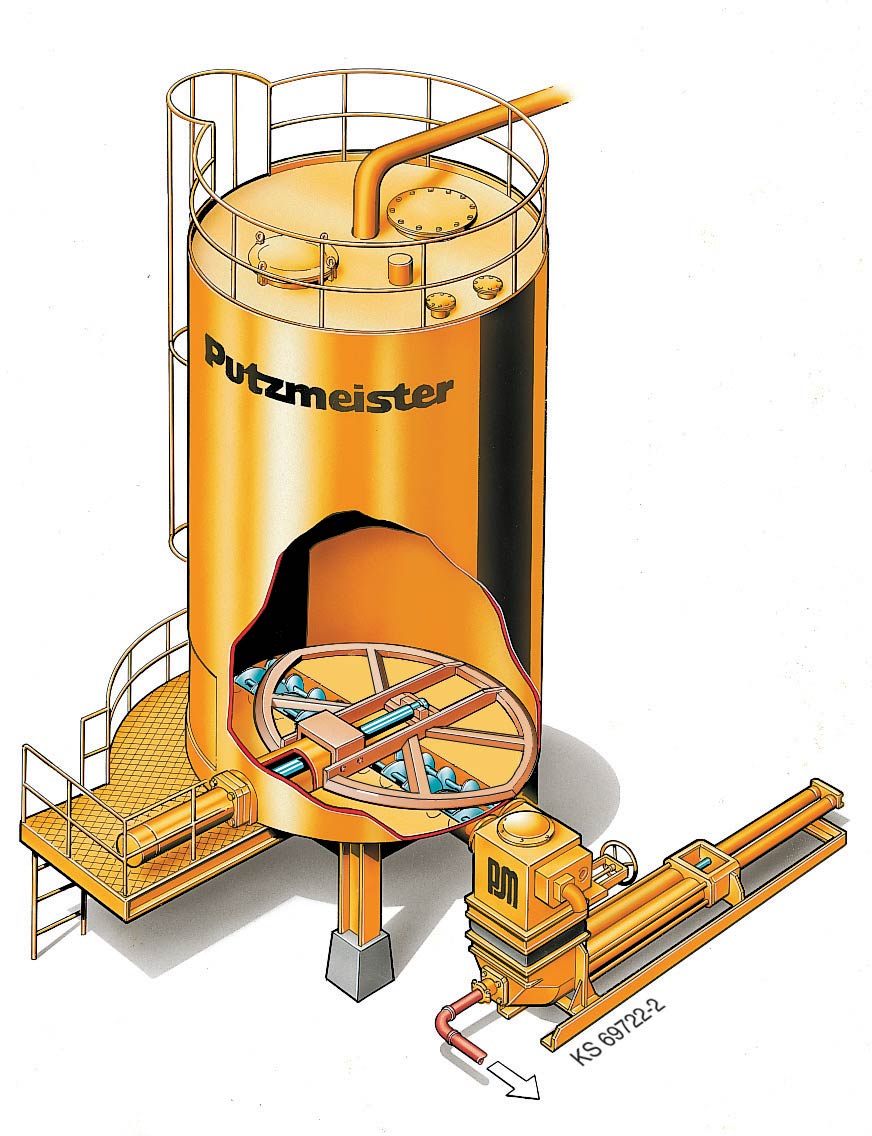
Storage silo
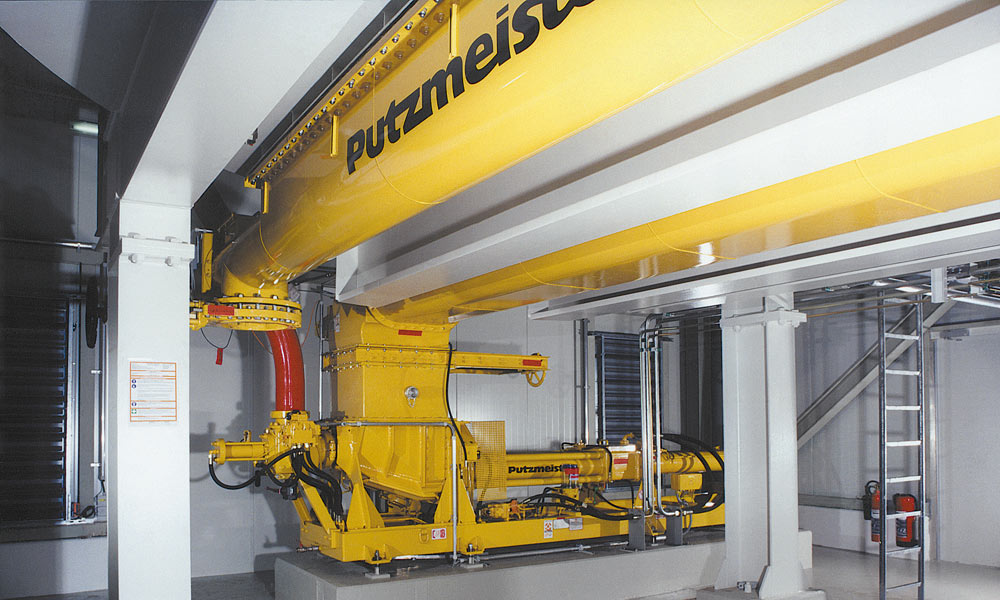
Solids handling pump KOS 1460 and emergency discharge auger beneath a 500 m³ storage silo
3. Delivery and distribution of sewage sludge
- There is generally a spatial separation of the sewage sludge receiving area, interim storage area and the boiler room. The required delivery pipe length can vary from 100 to 300 m with a height difference of 20 to 30 m. Putzmeister solids handling pumps convey sewage sludge via easy-to-assemble, form-fit, centred Putzmeister delivery pipelines equipped with ZX couplings or via welded delivery pipelines to distribution stations in the boiler room.
- In the boiler room, the sewage sludge is then distributed via Y-pipes or direct lines to the different points of delivery.
- A boundary layer lubricant injection station with three dosing pumps supplies the injection nozzles for the delivery line. The number of dosing pumps and a possible stand-by function depend on the specific nature of the project.
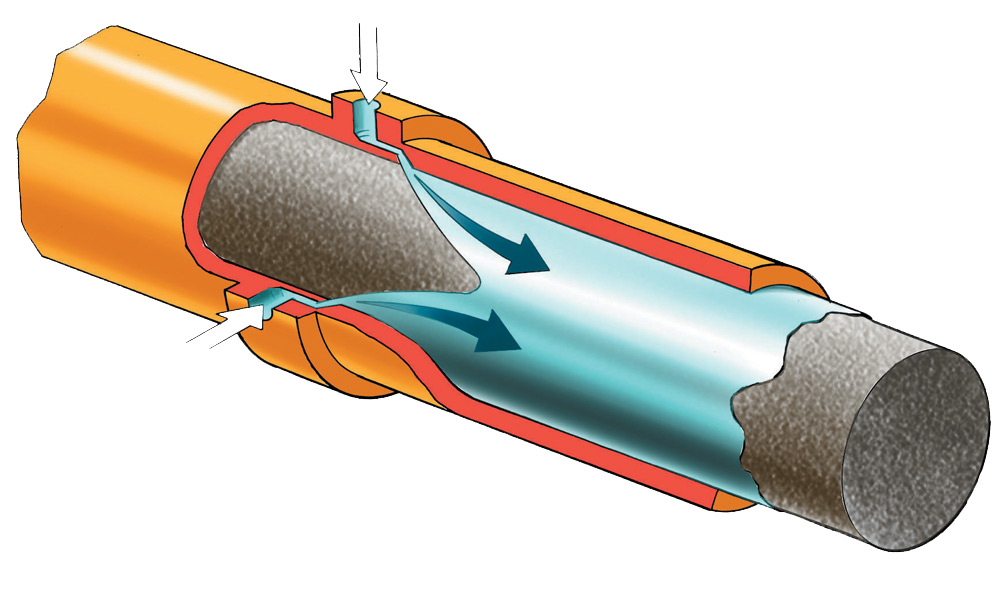
Principle of boundary layer lubricant injection (BLI)
4. Sewage sludge delivery
- Sewage sludge is delivered continuously either as a phased addition via “phase valves“ or from additional receiving vessels via speed-controlled augers.
- In the “phase valve“ system, the delivery lines end with hydraulically operated “phase valves”. A charging nozzle leads into the pulverizer chute discharge end. common hydraulic power unit HA 15 CE installed in the boiler room allows rapid and safe opening and closing of the „phase valve“.
- In the auger delivery system, continuous delivery of sewage sludge via frequency converter drive into the pulverizer chute is managed by the central control room.
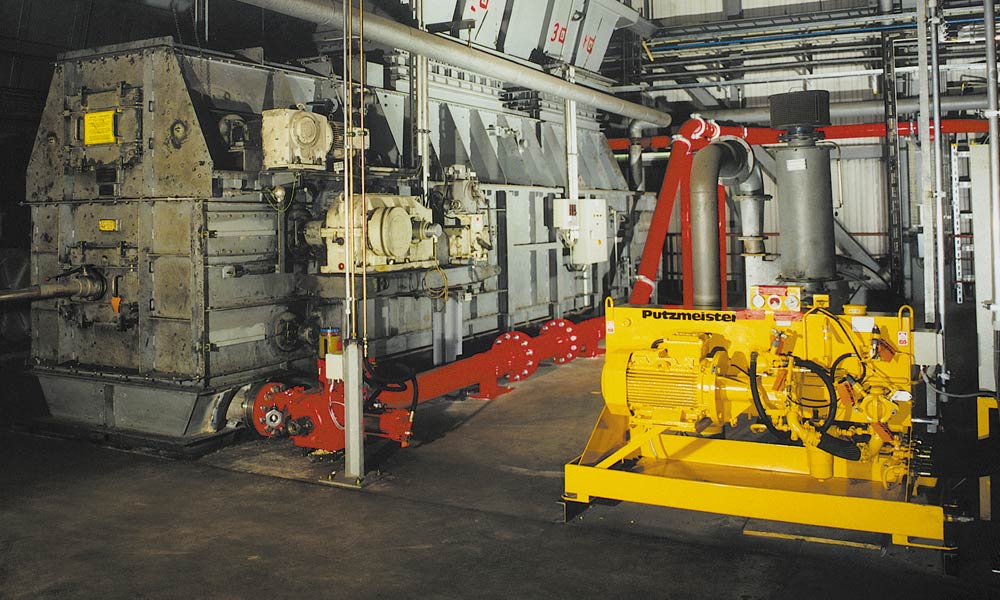
„Phase valve“ delivery system
Through numerous successful projects in coal-fuelled power stations, Putzmeister has gained comprehensive expertise on cost effective co-incineration of sewage sludge. In conjunction with reliable technology complete sewage sludge incineration lines can be delivered in conventional thermal power plants. Complete solutions from a single source represent important benefits for both customers and operators.